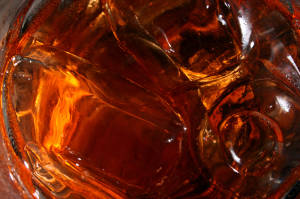Whiskey color is one of the elements that can be appraised when drinking whiskey. Whiskey gets its color primarily from the oak barrel that it is aged in. It starts off quite clear, then as it spends time in the barrel it ‘absorbs’ the coloring of the oak to become the brownish liquid that we know and love.
What makes whiskey color difficult to appraise is the addition of extra coloring. For example, makers of Scotch whisky are legally able to add caramel, which gives a darker apperance. It is illegal under US law to add extra flavor and coloring to ‘straight’ bourbon, though. Therefore, bourbons are typically lighter in color. Most single malt whiskys do not have added caramel because the drinkers of single malts are a bit more discerning as to what is added to their drink.

Whiskey color is important because, as we all know, we taste with our eyes. Drinking a whiskey that is too light, or worse, looks like urine, will no doubt put off many drinkers no matter how it tastes.
Color is also important from a marketing perspective. Imagine looking at a shelf in a liquor store to see five different bottles of whiskey with the same label – but they all have different colored whiskeys inside. People crave consistency, and part of the reason caramel is added is so every bottle looks the same.
What Whiskey Color Can’t Tell You
Whiskey color will not provide you with exact information as to the age of the whiskey. Some people correctly believe that a whiskey gets darker with age, but it’s far more dependent on the type of cask. A whiskey that is aged in a cask that formerly housed a dark red wine, for example, will have a darker color than something aged in a fresh oak barrel. Therefore, it’s impossible to put two whiskeys side by side and say that the darker one is older.